Unlock the secrets to vibrant Forsythia blooms with our seasonal care guide. Learn expert tips on planting, pruning and maintaining Forsythia flowers to enjoy their stunning yellow blossoms throughout the spring.
Forsythia, the harbinger of spring, is a beloved shrub that heralds the arrival of warmer days with its vibrant yellow blooms. These hardy plants are a beloved sight in gardens and landscapes across temperate regions, their cheerful flowers breaking through the winter gloom and lifting spirits with their sunshine-like hue.
Here’s a short information chart about Forsythia flowers:
| Aspect | Information |
|---|---|
| Botanical Name | Forsythia spp. |
| Common Name | Forsythia |
| Plant Type | Deciduous shrub |
| Zones | Typically zones 5-8 |
| Sun Exposure | Full sun to partial shade |
| Soil Type | Well-drained, fertile soil |
| Watering | Regular; prefers moderate moisture |
| Growth Habit | Upright, spreading |
| Height/Spread | 6-10 feet tall, 6-12 feet wide |
| Special Features | Early spring yellow flowers |
Origins and History
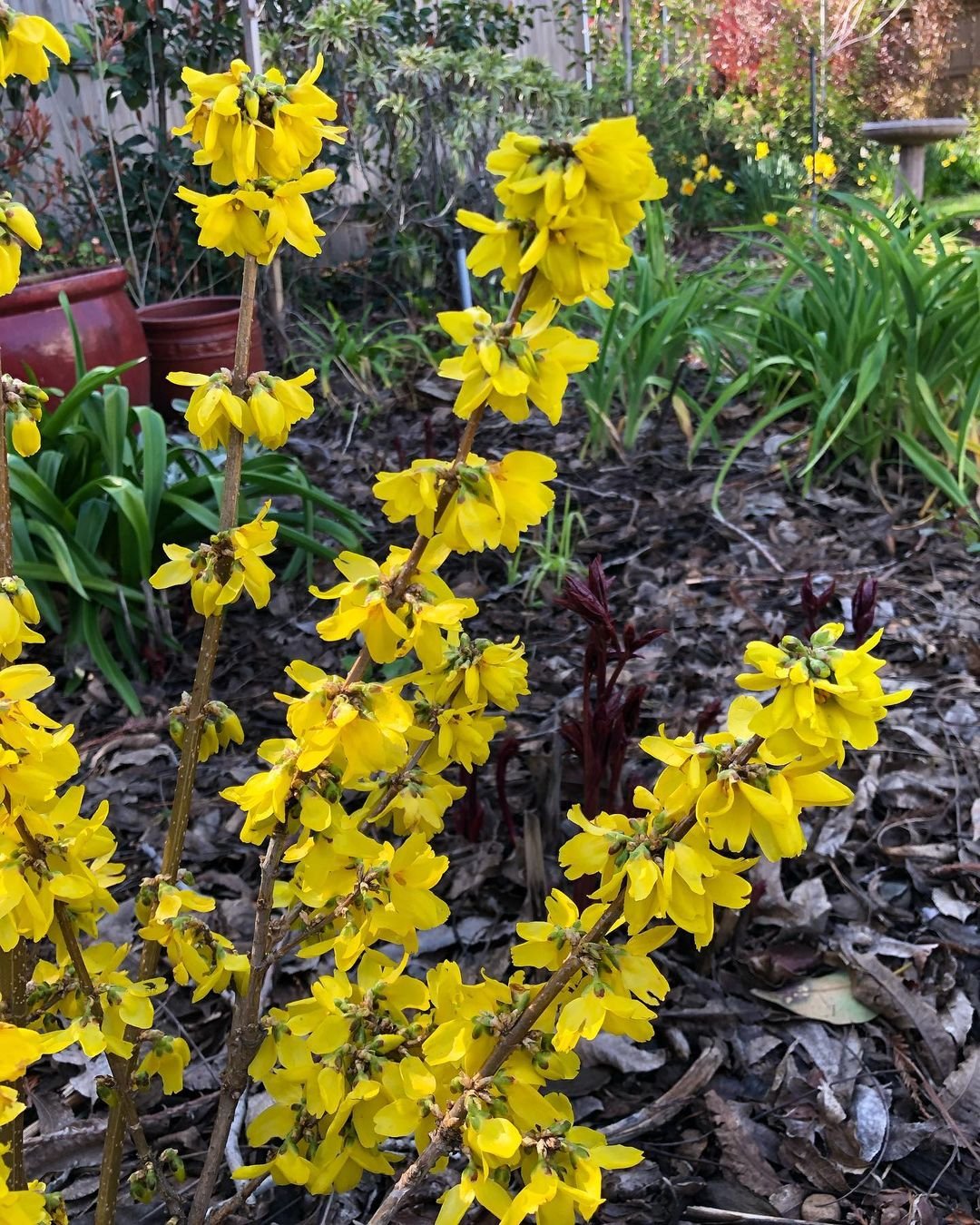
The genus Forsythia is named after William Forsyth, a Scottish botanist and horticulturist who lived in the 18th century. These deciduous shrubs are native to East Asia, primarily found in China, Korea and parts of southeastern Europe.
Forsythias were introduced to Europe in the late 18th century and quickly gained popularity for their early blooming and easy cultivation. By the 19th century, they had made their way to North America, where they became a staple in gardens and public spaces, earning the affectionate nickname “yellow bells.”
Botanical Characteristics
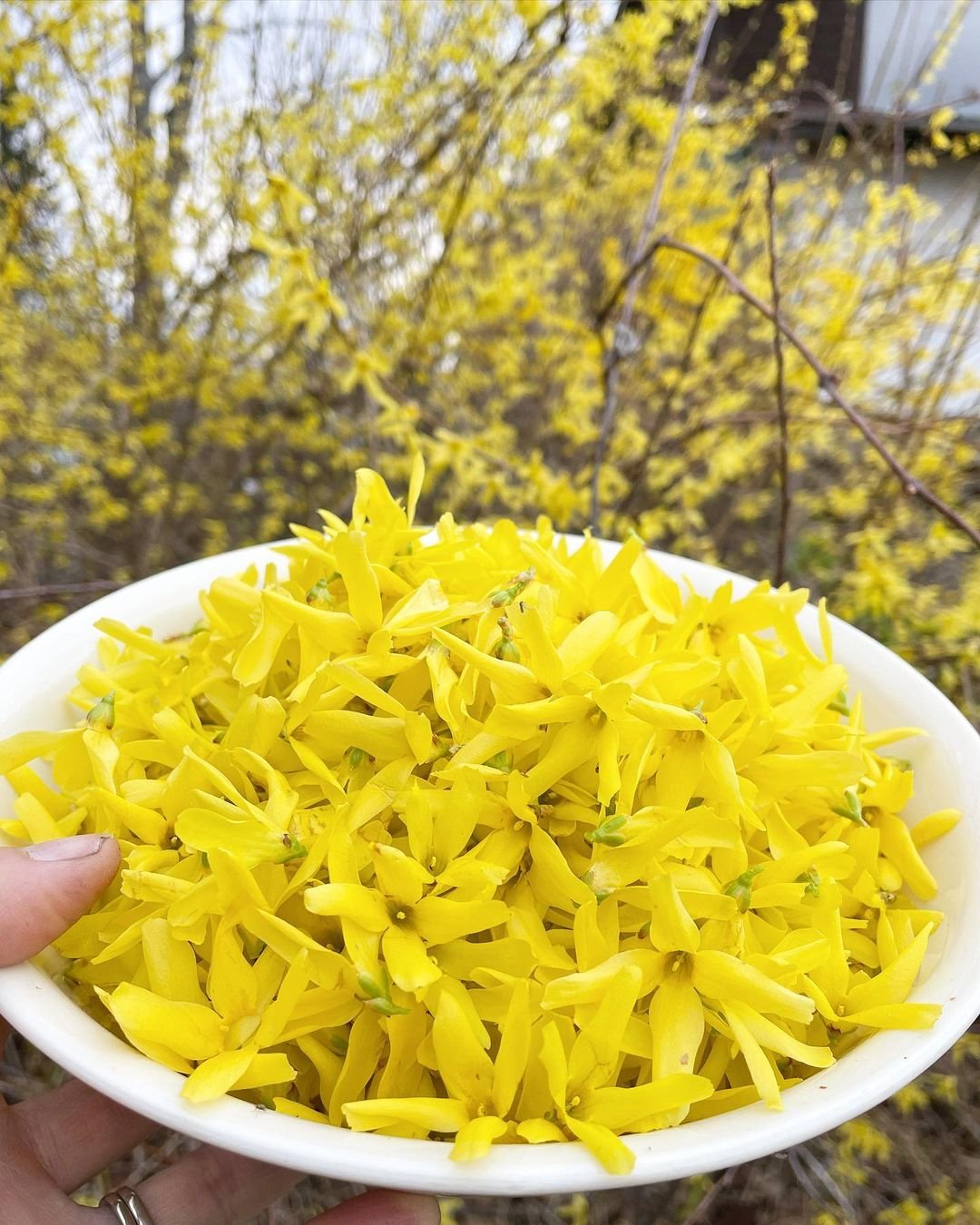
Forsythias belong to the olive family (Oleaceae) and are characterized by their arching branches, opposite leaves, and distinctive bell-shaped flowers. The blooms emerge before the leaves, creating a stunning display of pure yellow that brightens up the landscape.
The flowers are comprised of four slender, petal-like lobes and are borne in clusters along the stems. Forsythia plants can grow up to 10 feet (3 meters) tall and wide, making them an excellent choice for hedges, borders or as standalone specimens.
Cultivars and Varieties
While the common Forsythia x intermedia (a hybrid of two species) is the most widely cultivated, there are several other varieties and cultivars to choose from, each offering unique characteristics:
Forsythia x intermedia ‘Lynwood’
A compact cultivar with an upright growth habit and abundant blooms.
Forsythia x intermedia ‘Courtasol’
A dwarf variety that reaches only 2-3 feet (0.6-0.9 meters) in height, perfect for small gardens or containers.
Forsythia x intermedia ‘Meadowlark’
Known for its large, golden-yellow flowers and vigorous growth.
Forsythia suspensa
A weeping variety with long, trailing branches that create a cascading effect when in bloom.
Growing Conditions
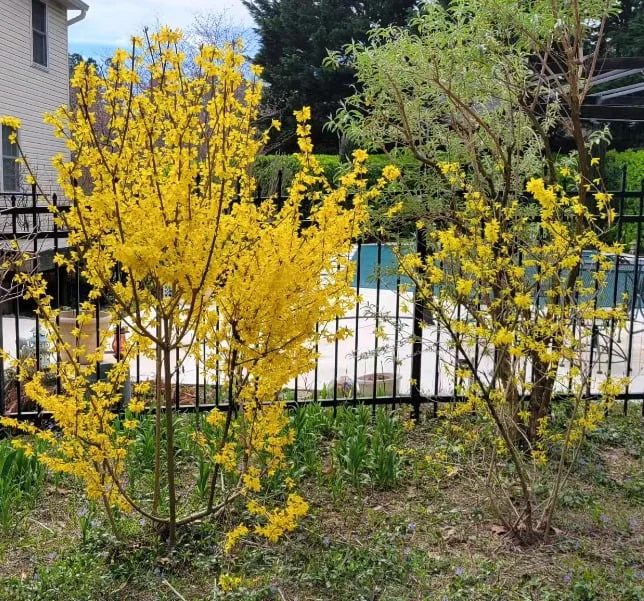
Forsythias are remarkably hardy and adaptable plants, capable of thriving in a wide range of growing conditions. However, to ensure optimal blooming and health, it’s essential to provide them with the following:
Sunlight
These shrubs perform best in full sun to partial shade, with at least 6 hours of direct sunlight per day.
Soil
Well-draining, fertile soil is ideal for forsythias. They can tolerate a range of soil types, from slightly acidic to slightly alkaline, as long as the drainage is adequate.
Water
While established plants are drought-tolerant, they benefit from regular watering during the growing season, especially during periods of prolonged dry spells.
Pruning
Forsythias respond well to regular pruning, which encourages new growth and promotes abundant blooming.
Pruning and Maintenance
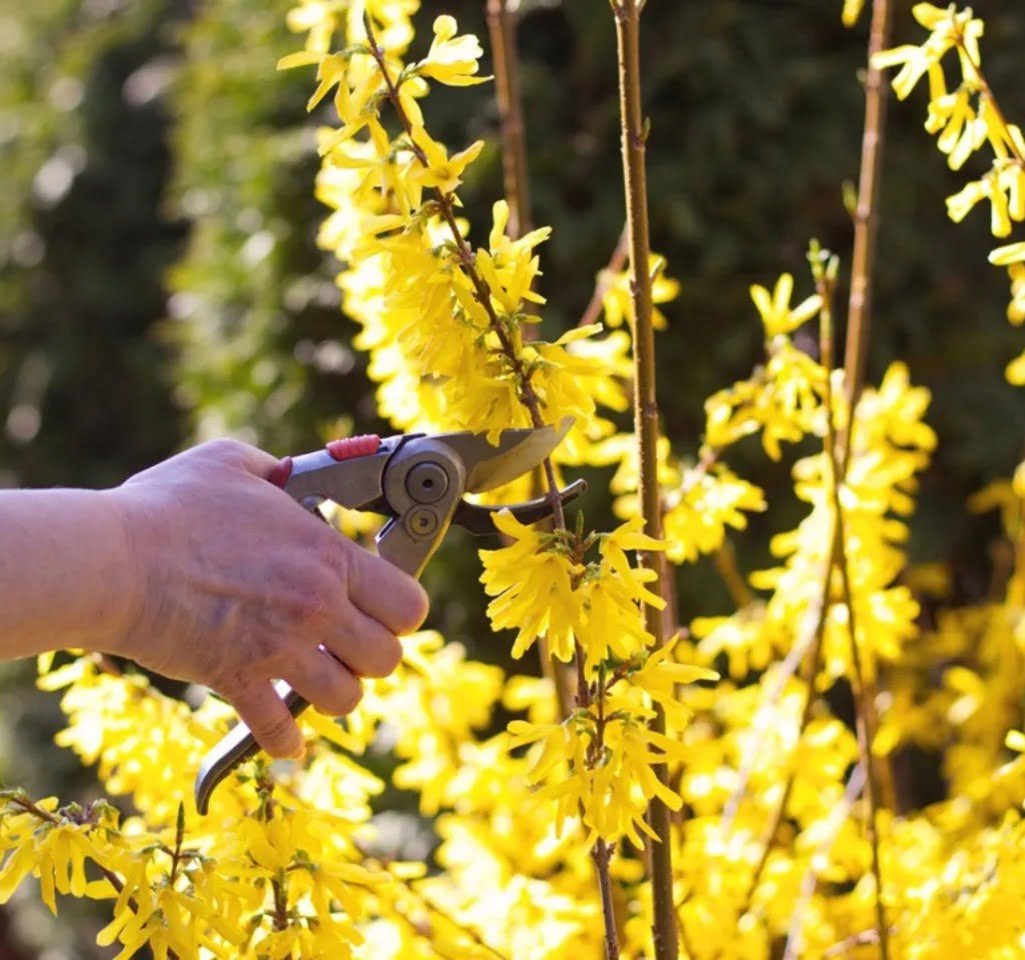
Proper pruning is crucial for maintaining the health and vigor of forsythia plants. The best time to prune is immediately after the blooming period, as the flowers emerge on old wood.
Begin by removing any dead, damaged or overcrowded branches, then thin out the interior to improve air circulation. You can also prune back overgrown branches to maintain the desired shape and size.
It’s important to avoid pruning forsythias in late summer or fall, as this can remove the buds that will bloom the following spring.
Propagation Methods
Forsythias can be propagated through several methods, allowing gardeners to easily expand their collection or share these beautiful shrubs with others:
Softwood Cuttings
Take 4-6 inch (10-15 cm) stem cuttings in late spring or early summer, remove the lower leaves and plant them in a well-draining potting mix. Keep the soil moist until roots develop.
Hardwood Cuttings
In late winter or early spring, take 6-8 inch (15-20 cm) hardwood cuttings from the previous year’s growth. Plant them in a sheltered area or a cold frame and keep the soil consistently moist.
Layering
This method involves bending a low-growing branch into the ground and covering a portion of it with soil. The buried section will develop roots, allowing you to separate it from the parent plant once established.
Division
Mature forsythia plants can be divided in early spring or fall. Carefully dig up the plant and separate the root ball into sections, replanting each division in a new location.
Pests and Diseases
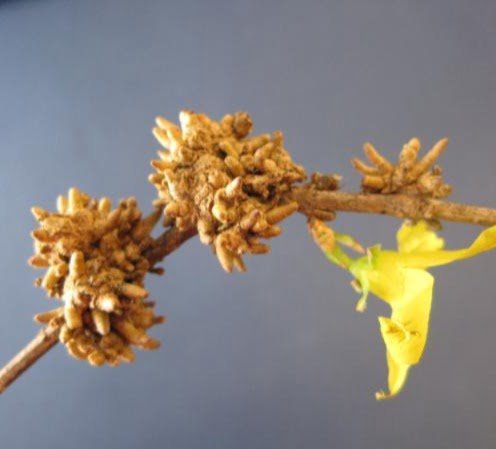
While forsythias are generally resilient plants, they can occasionally fall victim to certain pests and diseases. Early detection and proper treatment are crucial to maintaining the health and beauty of these shrubs:
Aphids
These small, sap-sucking insects can infest forsythia plants, causing distorted growth and sooty mold. Use insecticidal soaps or horticultural oils to control infestations.
Spider Mites
Tiny, spider-like pests that can cause leaf discoloration and webbing. Maintain proper soil moisture and use miticides if necessary.
Bacterial Blight
This disease causes dark brown spots on leaves and stems, eventually leading to defoliation. Prune and destroy affected parts and avoid overhead watering.
Root Rot
Caused by excess moisture, root rot can be prevented by ensuring proper drainage and avoiding over-watering.
Landscape and Design Ideas
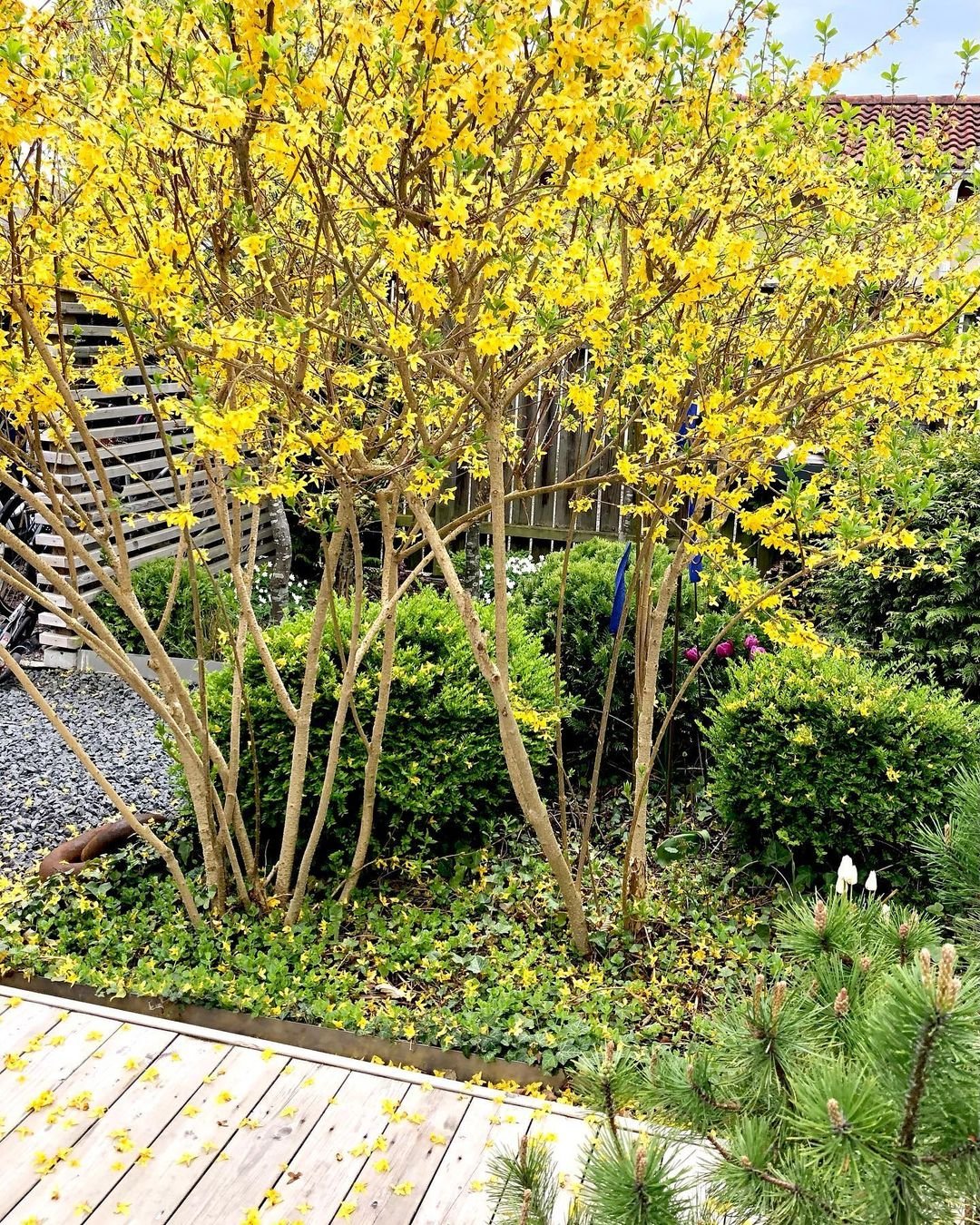
Forsythias are incredibly versatile plants that can be incorporated into various landscape designs and styles. Here are some creative ideas to inspire your gardening vision:
Border Plantings
Plant forsythias along borders or property lines to create a vibrant, living fence or hedge.
Specimen Planting
Allow a forsythia to stand alone as a focal point in your garden, showcasing its arching branches and stunning blooms.
Mass Planting
For a bold, eye-catching display, plant a mass of forsythias in a sunny location, creating a sea of yellow in early spring.
Container Gardening
Dwarf varieties like ‘Courtasol’ can be grown in large containers or planters, adding a pop of color to patios or entryways.
Naturalized Areas
Forsythias can be planted in naturalized areas or along woodland edges, creating a stunning contrast against the backdrop of evergreens or deciduous trees.
Forsythia flowers are true harbingers of spring, their vibrant yellow blooms signaling the end of winter and the arrival of warmer days ahead. With their easy care requirements, adaptability, and stunning floral displays, these hardy shrubs are a must-have for any garden or landscape.
By following the tips and techniques outlined in this guide, you’ll be well-equipped to cultivate and enjoy these cheerful beauties year after year. Whether planted as a vibrant border, a stunning specimen or a naturalized addition, forsythias are sure to bring a touch of sunshine to your outdoor spaces.
So, embrace the blooming secrets of forsythia flowers and let their golden hues brighten up your garden and uplift your spirits as the seasons change.
Pingback: Forsythia Flowers: Seasonal Care and Blooming S...